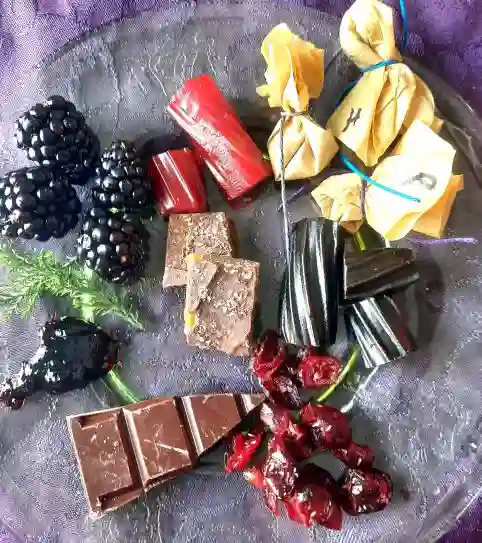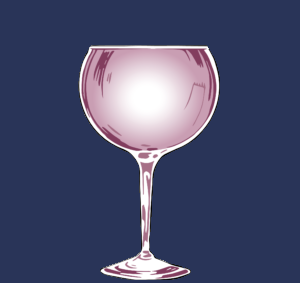The Third ‘S’ of Wine Tasting…

The ‘nose’ of a wine, how it smells, is a big part of wine evaluation and enjoyment. After all, it comes right in the middle of the five S’s of wine tasting- See, Swirl, Sniff, Sip, Savor. (A sixth, “Spit” can be added, but is my least favorite part of wine tasting, necessary though it often is.
For me, closing my eyes and burying my nose deep into a glass and teasing out all the scents I can find is one of the most enjoyable and challenging parts of wine tasting. Smell is tightly connected to memory and there are often many layers I need to go to before I finally have the ‘aha’ and connect what I’m smelling to a word to describe it. “What is it? What is it? What is it?” echoing in my head as I sift through foods, places, experiences trying to track down a clue that will lead me to identify it.
Wine Anectdote Ahead…
An illustration of this was a time I was tasting a Riesling at a very casual wine tasting with friend who is highly wine knowledgeable and Wine Scholar diploma-ed. Plunging my nose in the glass I sniffed and sniffed, came up for air, swirled the wine again, and sniffed some more. Riesling is a very aromatic grape and right off the bat I could smell tropical fruits and a little of the exotic lychee fruit. But deep within the glass, the wine was giving me something else. A scent that was pulling me far back into memory, but what was it?
I took a another breath of non-wine air, then went back to the glass. My actual surroundings- the wine shop where I worked and where I was actually in charge of this tasting- faded as bits and pieces of recollection flitted across my brain, then just as swiftly, maddeningly, retreated.
Finally, breathing deeply once more from the bowl of the glass, I saw the light yellow of the walls of my childhood bedroom, felt the rough fibers of the beige carpet beneath bare legs as I sat in shorts and t-shirt, crosslegged on the floor, a tiny comb in one hand and…
“Barbie-doll hair!” I blurted out involuntarily. Finally, the memory was clear. In my mind I was holding my sister’s Skipper doll in one hand, her long, dark tresses in front of my face as I attempted to untangle them.
My companion laughed out loud at this. “Barbie doll hair?” she questioned, laughing incredulously,. “You always have the wildest descriptions.”
“Smell it,” I insisted. “It’s Barbie doll hair.” A little defensive I added, “didn’t you ever play with Barbie Dolls?”
Good naturedly she took another sniff, and then aceded that Barbie doll hair is actually plastic and could have a similar smell as petrol, or oil, something Riesling can also commonly have scents of, in varying amounts.
‘Barbie Doll hair’ may or may not be an ‘acceptable’ description of a wine aroma, but in that one sniff, I had gone back decades in time and accessed a memory that I had no real reason to recall. It was just there. A snapshot of my childhood conjured by a scent in a wine made in a country thousands of miles away from me from a small, pungent grape.
But I have digressed.
Why Are Wine Scents Important?ine Anectdote Ahead…
Along with enhancing the wine experience, aromas in wine can give an incredible amount of information about the wine. With practice, you may be able to identify the grape, the country it was grown, its age, whether the wine is sound to drink, even particular vineyards. You’re likely to smell fruits, flowers, earth, tobacco, leather (old hide being differentiated from new), even wet leaves, menthol and eucalyptus (among many other things). But tapping into this part of the brain to quickly and accurately indentify these smells can take practise and patience.
You Can Train Yourself to Identify Wine Scents
Taking notice of everyday scents – foods (fruits and berries especially), nature (wood, leaves, dirt, barnyard), even inorganic things (I’ve smelled old books, the dust from my aunt’s attic, metal, wax, perfume). Some of these things don’t seem like the best things you’d like to smell in something you’re going to drink, but to a wine taster, they are just descriptors and usually neutral in what they mean. Unless, in particular, it smells like a wet basement, damp cardboard, wet dog, or anything in that vein. This means the wine is ‘corked’- an unfriendly bacteria has gotten into it and changed the flavor. It won’t hurt you, or make you sick, but it will alter your wine experience in a very negative way. It is also not a bad reflection on the winemaker, restaurant, or where you purchased the wine. Corked wine happens in about 6-10% of all wines and it can’t be detected until the wine is opened.
Another way to learn about this is to use an aroma kit of some sort. My first experience with this was years ago when I was assisting at a wine class at a cooking school. The instructor had a couple dozen black and gray capped plastic camera film canisters (remember them?) each filled with a different scent substance. She had different flavors of jam, liquid smoke, a piece of leather, tobacco and so on. We would smell the contents and then try to pick out any of the scents in the wines. You can find more formal versions of this online. A quick search pulled up a Master Wine Aroma Tasting Kit with 88 different scents for $399, a used Winealyzer on Ebay with 50 scents for $50, a Tasterplace with 9 vials for $54, and Aroma Academy Nose Training system, 24 scents for $148.
Or Make Your Own
I was having friends for a casual Bordeaux tasting party and did a small recreation of my first experience with an aroma kit in a simple and inexpensive way.
Since film canisters are no longer common, I used my grandmother’s green Depression Glass salad plates (Dancing Girl pattern). I arranged cherry licorice, black licorice, a glob of blueberry jam, craisins, raisins, dark chocolate, a handmade chocolate covered toffee, blackberries, a slice of green pepper, a sprig of cedar, and small bundles (handmade, using an unbleached coffee filter and twine) containing freshly cracked black pepper, a mix of dried herbs, and baking cocoa respectively. I also had tiny bottles of cherry, butterscotch, raspberry, blueberry, and coffee vodka thinking their exaggerated scents would to help identify aromas as well (and they were open for anyone wanting to do a shot, which was declined.)
I poured small samples of the first wine into each glass (a St. Emilion Merlot/Cabernet Franc) and it was an interesting discussion as we swirled, smelled and sipped (no one spit) and worked at picking out the various flavors and scents. We went on to a Margaux Bordeaux (Merlot and Cabernet), and California Cabernet tasting in the same manner. But though as these are friends who love wine, are knowledgeable, and enjoyed the more formal tasting, they haven’t taken the deep dive into the wine world that I have. This was a party after all. So after giving the three wines a concise, but respectful tasting, each chose the bottle they liked best to have a proper glassful and we went on to enjoy the wine the very best way. With food. In this case my guests and I had created a meal of a burrata and roasted broccoli salad, sausage stuffed mushrooms, a carmelized onion tart, fresh vegetables, and Italian beef on Parmesan cheese bread, ending with chocolate truffles and a perfect piece of an Opera cake.
Conculsion To The Anecote
A week or so after the Riesling tasting I had done with my highly knowledgeable friend, I was reading an interview by Amy Henson with Wine Folly’s Madeleine Puckette: (https://www.riberaruedawine.com/a-rueda-picnic-with-wine-follys-madeline-puckette/) as they tasted white Rueda wines (I love that they were using Mason jars!), and came across this glorious sentence “It’s getting at that real petroleum note that almost smells like Mattel Barbie doll.”
Did I smile triumphantly and send the link to my friend? I have to admit that I did, as fast as my fingers could text.
